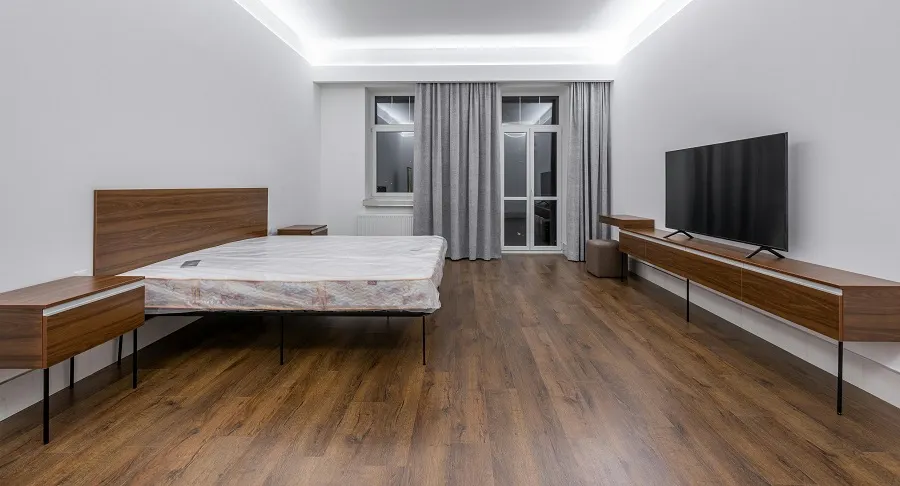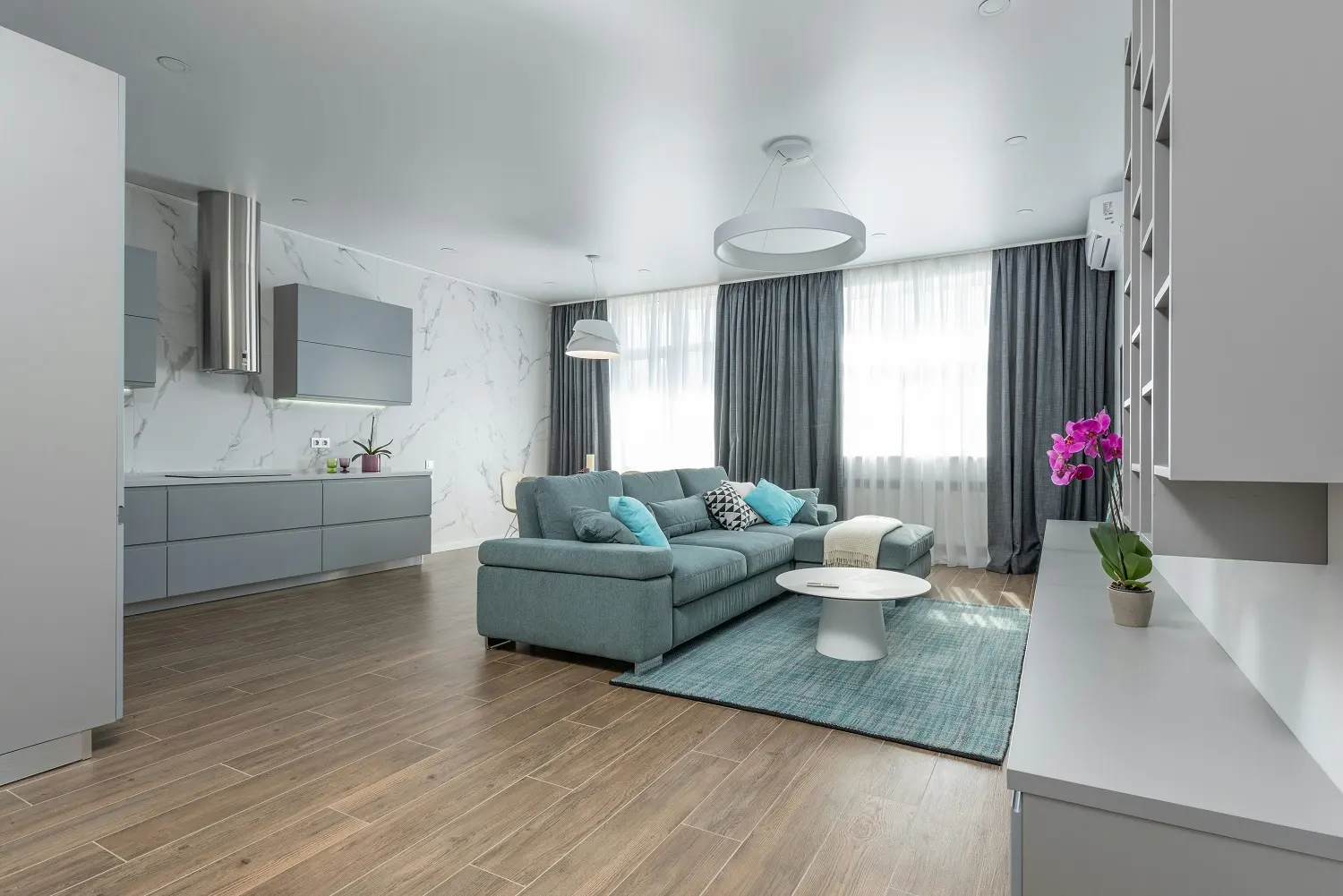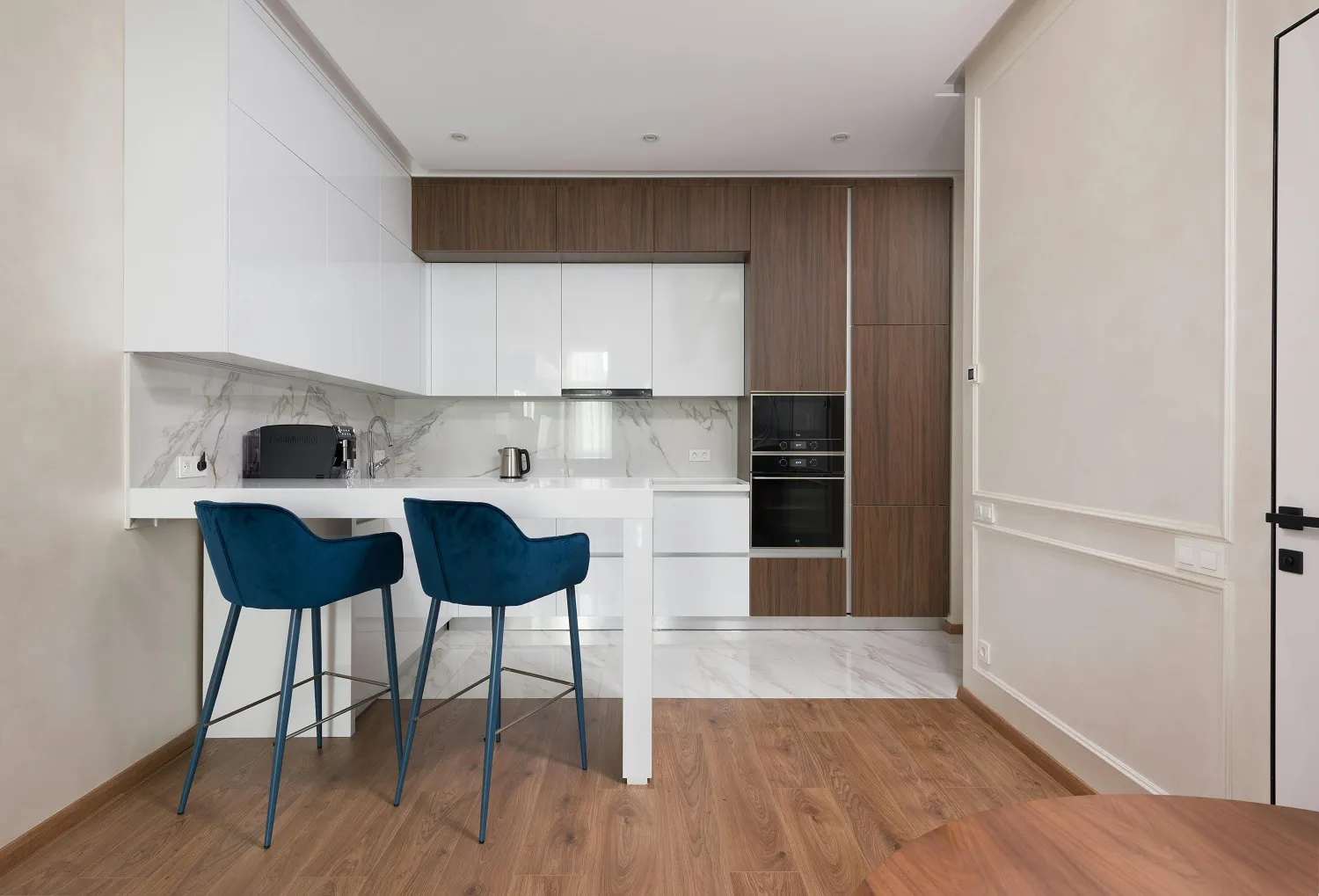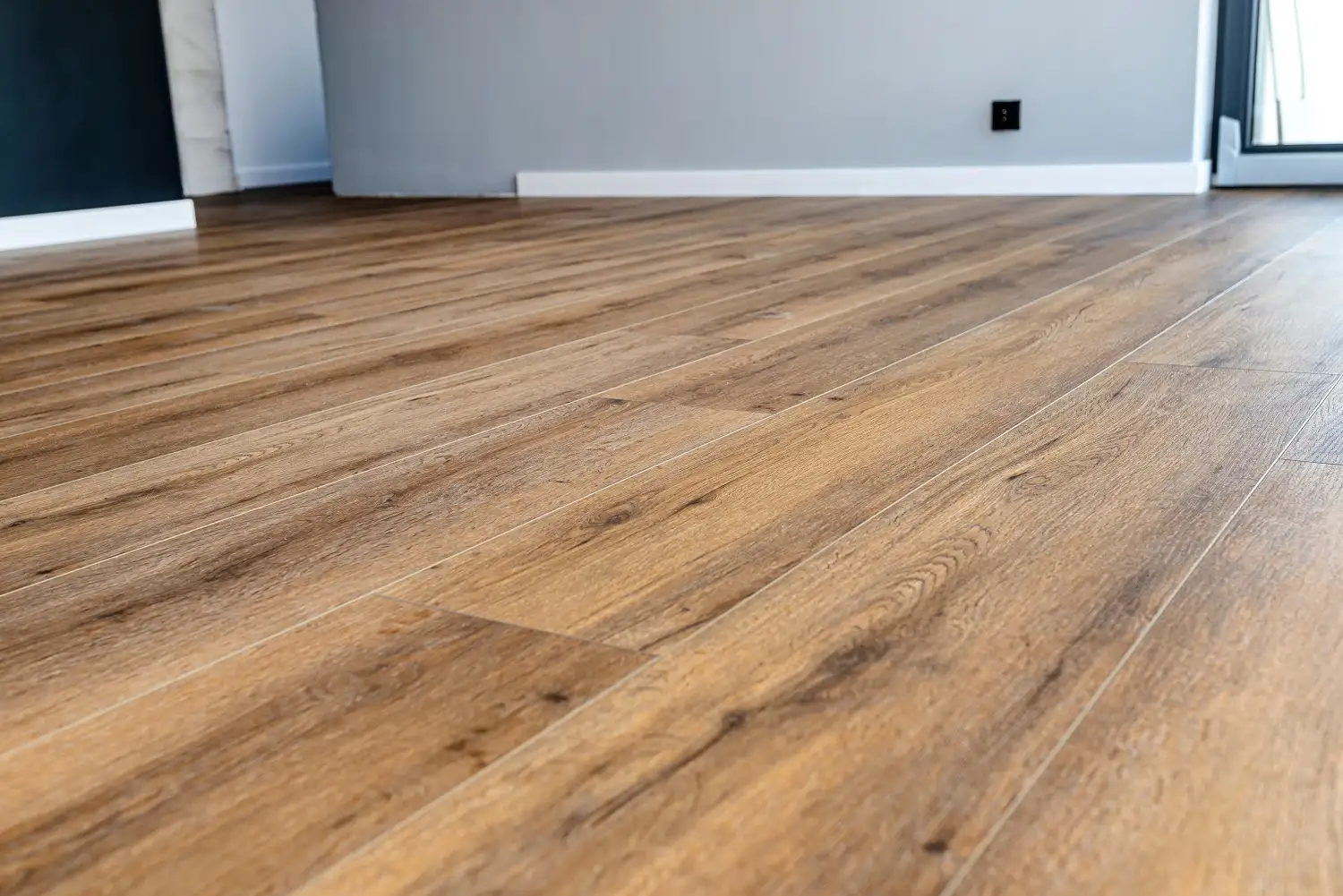Choosing between vinyl and laminate flooring creates confusion for Chicago homeowners facing conflicting advice from contractors, retailers, and online sources. Your decision affects daily living for the next 15-25 years while impacting home value, maintenance costs, and family comfort.
As experienced flooring installers serving Chicagoland homes for decades, we've installed thousands of square feet of both materials and witnessed their long-term performance across Chicago's challenging climate conditions. This comparison examines the critical factors determining which flooring type serves your specific needs best. For deeper insights into vinyl's advantages, explore our guide on why vinyl plank may be your best flooring choice.
Inside the Technology: How Modern Vinyl and Laminate Floors Are Built
Material composition fundamentally determines flooring performance characteristics. Today's vinyl and laminate products represent sophisticated multi-layer systems engineered for specific performance advantages.
Vinyl Flooring Layer Structure

Contemporary luxury vinyl plank (LVP) features four to six distinct layers working together. The backing layer provides structural stability and sound dampening. Above this sits the rigid core, either stone plastic composite (SPC) or wood plastic composite (WPC), delivering dimensional stability and waterproof protection. The decorative film layer provides realistic wood or stone visual effects. The wear layer, measured in mils, protects against scratches, stains, and daily wear. Learn more about top-performing options in our best rated vinyl plank flooring rankings.
According to the Resilient Floor Covering Institute, modern vinyl flooring typically incorporates calcium carbonate filler in SPC cores, creating exceptional density and impact resistance while maintaining waterproof integrity throughout the entire plank thickness.
Laminate Flooring Core Technology

Laminate flooring employs different engineering principles focused on structural strength and aesthetic realism. The foundation consists of high-density fiberboard (HDF) core made from compressed wood fibers and resin binders. Above the core, a high-resolution photographic layer captures authentic wood grain patterns. The protective overlay consists of melamine resin infused with aluminum oxide particles, creating one of the hardest wearing surfaces available in residential flooring.
The North American Laminate Flooring Association reports that quality laminate products demonstrate dimensional stability within 0.15% when properly acclimated, though moisture exposure remains their primary vulnerability compared to vinyl's complete waterproof construction.
#cta_start
Need Expert Help Choosing the Right Flooring?
Get personalized recommendations for your rooms, lifestyle, and budget.
#cta_end
Waterproof Performance: The Decisive Difference
Chicago's climate presents unique moisture challenges requiring careful flooring selection. Winter snow tracking, spring flooding risks, summer humidity, and household spills create constant moisture exposure testing flooring durability.
Vinyl: Complete Waterproof Protection
Vinyl flooring delivers 100% waterproof performance throughout its entire construction. The rigid core technology prevents water absorption at the molecular level, allowing complete submersion without damage. Standing water can remain on vinyl surfaces for extended periods without causing swelling, warping, or structural compromise. Quality products feature sealed joints preventing moisture infiltration between boards, making vinyl ideal for moisture-prone Chicago basements and bathrooms. Discover the surprising benefits of waterproof vinyl flooring for Chicago's challenging climate.

Laminate: Water-Resistant with Limitations
Laminate flooring offers water resistance rather than waterproof protection. The HDF core consists of compressed wood fibers that absorb moisture when exposed to standing water or high humidity. Modern "waterproof" laminate products feature enhanced moisture-resistant cores and treated edges, extending tolerance to brief water exposure. However, prolonged contact with standing water causes irreversible swelling and board replacement becomes necessary.
The ASTM International standard D4442 testing protocol demonstrates that traditional HDF laminate cores can absorb 10-15% water content when exposed to moisture for 24 hours, while vinyl cores maintain 0% water absorption under identical conditions.
Durability Face-Off: Vinyl vs. Laminate in Pet- and Kid-Friendly Homes
Daily wear patterns determine flooring longevity and maintenance requirements. Chicago families with children, pets, and heavy furniture movement need materials withstanding constant impact and abrasion.

Laminate Leads in Scratch Resistance
- Superior hardness: Janka rating of 2,000-3,000 pounds-force.
- Aluminum oxide coating: Creates one of the hardest residential flooring surfaces.
- Pet-friendly: Resists scratches from large dog claws better than vinyl.
- Impact resistance: Rigid construction prevents denting from dropped objects.
- Heavy furniture: Handles furniture legs without surface compression.
Vinyl Offers Flexible Durability
- Moderate scratch resistance: 20-40 mil wear layers handle normal traffic.
- Flexible composition: Absorbs impact rather than chipping or cracking.
- Surface marking: Shows scratches from sharp objects more readily than laminate.
- Wear layer dependent: Commercial-grade products perform better.
- Texture advantage: Minor scratches blend into textured finishes.
Testing results: The National Wood Flooring Association comparative testing shows AC4-rated laminate withstands 4,000 revolutions on Taber abraser testing before showing visible wear, while typical residential vinyl demonstrates visible marking after 2,500-3,000 revolutions.
Bottom line for Chicago homes: Laminate excels with large pets and heavy furniture in dry areas, while vinyl performs better in moisture-prone locations where scratch resistance matters less than waterproof integrity.
What Will It Really Cost? Vinyl vs. Laminate by the Numbers.
Budget considerations influence material selection for most Chicago renovation projects. Understanding complete project costs prevents unexpected expenses and ensures realistic planning.
Material Cost Breakdown
Vinyl flooring tiers:
- Budget ($2-3/sq ft): Adequate for low-traffic areas.
- Mid-range ($4-5/sq ft): Good performance for most residential applications.
- Premium ($6-7/sq ft): Superior wear layers, authentic textures, enhanced warranties.
Laminate flooring tiers:
- Entry-level ($1-2/sq ft): Temporary installations or rental properties.
- Quality residential ($3-4/sq ft): AC3 or AC4 ratings for normal family traffic.
- Premium ($4-5/sq ft): Superior wear properties, authentic appearance.
Installation Considerations
Professional installation costs in Chicago typically run $2-4 per square foot for either material when using floating installation methods. For detailed material comparisons, see our luxury vinyl plank vs. laminate flooring guide. Subfloor preparation, removal of existing flooring, and furniture moving add $1-3 per square foot to total project costs regardless of material choice.
Long-term value: Vinyl typically lasts 15-25 years while laminate lasts 10-20 years under normal residential use. Neither material can be refinished, requiring complete replacement when damaged beyond repair.
DIY or Pro? Installing Vinyl and Laminate in Chicago Homes.

Installation complexity affects project costs and timeline considerations. Both materials offer homeowner-friendly options with important distinctions.
Click-Lock Systems Dominate Both Materials
Both vinyl and laminate commonly employ click-lock floating installation systems requiring no adhesive or nails. Tongue-and-groove edges snap together through mechanical locking mechanisms, allowing entire floors to float over underlayment without attachment to subfloors. This method enables easier repairs through individual plank replacement and eliminates adhesive curing time. Planning your installation? Check our guide on which direction to lay vinyl plank flooring for professional results.
Vinyl Offers More Installation Flexibility
Additional vinyl installation methods:
- Glue-down application for commercial spaces
- Loose-lay systems for temporary installations
- Better conformity to slightly uneven subfloors
- More forgiving of minor subfloor imperfections
Subfloor tolerance: Vinyl tolerates imperfections up to 3/16 inch over 10 feet, while laminate demands smoother surfaces within 1/8 inch over 10 feet to prevent joint stress.
Laminate Requires More Careful Handling
Critical laminate considerations:
- Rigid, brittle nature can chip if dropped during installation
- Requires precise expansion gaps: 1/4 to 3/8 inch around perimeters
- Chicago's climate swings demand proper gap planning
- Cannot conform to uneven surfaces like flexible vinyl
- Often needs additional leveling compound on older Chicago subfloors
Which Feels Better Underfoot? Comfort and Noise Compared.
Physical characteristics and care requirements affect daily living experience beyond visual appearance.
Underfoot Feel Comparison
Maintenance Requirements
Vinyl flooring care:
- Regular sweeping or vacuuming
- Damp mopping with pH-neutral cleaners
- Waterproof construction allows wet mopping
- Spills can sit briefly without permanent damage
- Minimal restrictions on cleaning methods
Laminate flooring care:
- Regular sweeping or vacuuming
- Dry or damp mopping only
- Standing water requires immediate removal
- Steam mops void most warranties
- More careful moisture management needed
These luxury vinyl care tips detail proper maintenance procedures extending flooring lifespan.
Shared benefits: Both materials resist UV fading better than hardwood, require no refinishing, and provide genuinely low-maintenance options for busy Chicago households. Neither material needs waxing, polishing, or periodic restoration treatments.
Decision Time: Which Flooring Truly Fits Your Lifestyle?
Neither material is universally superior, your choice depends on specific room conditions, household activities, and personal priorities.
When Choose Vinyl Flooring
- Installing in bathrooms, laundry rooms, basements, or moisture-prone areas
- Households include young children creating frequent spills
- Softer, warmer underfoot feel matters for comfort
- Noise reduction between floors is important
- Complete waterproof protection provides peace of mind
Still deciding between vinyl formats? Compare options in our vinyl plank vs. vinyl sheet flooring guide.
When Choose Laminate Flooring
- Maximum scratch resistance needed for large pets
- Installing in dry areas like bedrooms and living rooms
- Budget constraints require lowest material costs
- Authentic wood appearance with high-gloss finish desired
- Heavy furniture creates denting concerns with softer vinyl
Strategic Whole-Home Approach
The smartest strategy combines both materials: vinyl for kitchens, bathrooms, basements, and entryways where moisture matters; laminate for bedrooms, living rooms, and formal areas where superior scratch resistance and lower cost shine.
Ready to Upgrade? Let’s Transform Your Chicago Home Today.
Professional installation ensures proper subfloor preparation, correct expansion gaps, and appropriate transition strips between materials. Simple Flooring brings decades of Chicago-specific installation experience ensuring both materials perform as designed. Contact us for professional guidance selecting and installing the right flooring for your specific needs.
.svg)






.svg)





